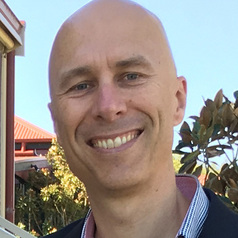The world’s countries will face tough choices if they want to achieve several different targets for sustainability, such as reducing their fossil fuel footprints and conserving water, at once.

That is the conclusion of a new study that explored the different options that Australia has for meeting the United Nations Sustainable Development Goals (SDGs) – a set of 17 goals that almost 200 nations have signed on to work toward by 2030. The study examined how Australia could meet these goals through changes to its farmlands and livestock ranges. And, researchers discovered, chasing after multiple targets for sustainability can be a precarious affair: In some cases, making progress on one goal, such as storing large volumes of carbon dioxide in biomass and soils, means working against others, such as reducing water use.
To get to the bottom of those trade-offs, the researchers considered a series of possible futures for Australia’s land sector, which includes large swathes of wheat fields and cattle pastures. Based on their calculations, the country met two sustainability goals simultaneously in about one quarter of those pathways and met three goals in only 10% of the options.
The team published its findings on Thursday, April 13, 2017 in Nature. The results suggest that individual sectors of society, like agriculture, can’t achieve sustainability on their own – this complex pursuit requires buy-in from all parts of a nation, from cities to the energy industry.
“We really have to be smart about this,” says Brett Bryan, formerly of the Commonwealth Scientific and Industrial Research Organisation (CSIRO) in Australia and now a Professor at Deakin University in Melbourne. “If we want to achieve multiple aspects of sustainability, then we need a new kind of science where we take an integrated and detailed look across the whole of the environment and economy. We need to work out across that spectrum how we can actually achieve multiple sustainability targets.”
This research contributes to the work of the Global Land Programme, a global research project of Future Earth.
The Sustainable Development Goals don’t lack in ambition, according to the study. These goals, part of the United Nations’ 2030 Agenda for Sustainable Development, cover many aspects of sustainability. They include “End hunger, achieve food security and improved nutrition and promote sustainable agriculture” (Goal 2) and “Sustainably manage forests, combat desertification, halt and reverse land degradation, halt biodiversity loss” (Goal 15).
But the goals are vague and don’t spell out how the world can realistically meet them, says Bryan, the joint-lead author of the new study. That means that the hard work, coming up with concrete paths for achieving all 17 goals at once, is left to individual nations. In the new study, he and his colleague Lei Gao of CSIRO in Adelaide, Australia, decided to probe what sort of options might be open to Australia.
To do that, the pair turned to a massive computer simulation, or model, called Land-Use and Trade-Offs (LUTO). LUTO considers a number of factors that could shape Australia’s landscape in the coming decades. “These might be changing climate policies or crop prices,” Bryan says. “We then characterised how patterns of land use might change based on human behaviour – what people do and where on the land.”
In other words, under a certain scenario, would wheat fields fueled by irrigation expand in southern Australia, or would people convert croplands into forests? Today, the country’s agricultural lands spread over about 85 million hectares. Farmers, in turn, produced around $34 billion in crops, meat and other exports in 2015. In all, the researchers tallied 648 possible futures for this part of Australia and looked at how they stacked up against the aspirations of the Sustainable Development Goals.
They found that, by 2030, achieving many different goals in Australia’s land sector would be a difficult task. Achieving five goals at once only happened in six, or less than 1%, of the possible futures. In part, that’s because sustainable development comes with a lot of surprises. “If you improve one thing in the land system by changing land use or land management, you could worsen others,” Bryan says. “There are all these trade-offs.”
He gives the example of storing carbon dioxide: If farmers shifted to growing trees instead of crops, that would up the amount of carbon dioxide that plants pull out of the air and put into the ground, a phenomenon called carbon sequestration. But it would also stress the country’s water reserves. Forests, Bryan explains, need more water to flourish than wheat fields.
Other goals, however, seemed to go together well. They included simultaneously achieving targets around growing adequate amounts of food, conserving water and producing biofuels. Australia met this trifecta in 6.5% of possible futures – a relatively high success rate.
The results show why nations shouldn’t rush into sustainable development without a plan – one that considers the various clashes that could exist in the future. Bryan adds that it’s critical for parts of society, such as agricultural lands, to focus on achieving a few priorities in sustainability, rather than try to tackle all goals at once. In the case of the land sector, that may include slowing the loss of the country’s natural habitats, a goal that few other areas of Australian society can make progress on.
“In the land sector, we need to address those things that are critical for the land sector to do: producing food and reversing land degradation” Bryan says. “While land can help with the other goals, we really need to leave things like carbon sequestration and energy production other sectors of the economy. Other parts of Australia need to do some heavy lifting, too.”
